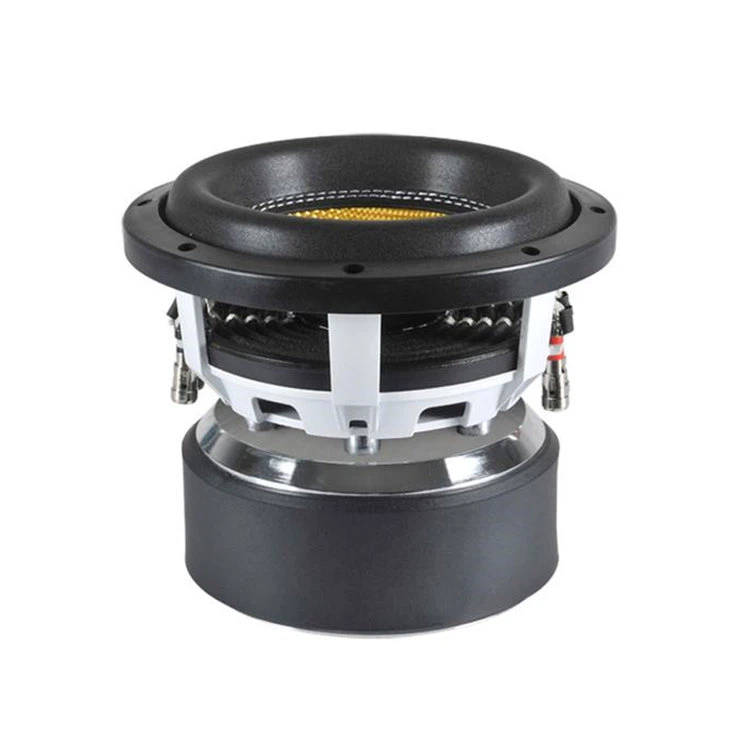How does a speaker magnet work in a bookshelf speaker?
 Jul 08, 2025|
Jul 08, 2025| A bookshelf speaker is a popular audio device known for its compact size and high - quality sound output. At the heart of every bookshelf speaker lies a crucial component: the speaker magnet. As a speaker magnet supplier, I am well - versed in the science and functionality of these magnets. In this blog, I'll take you through the inner workings of a speaker magnet in a bookshelf speaker.
The Basics of Speaker Sound Production
Before delving into the role of the magnet, it's important to understand how a speaker produces sound. Sound is essentially a series of pressure waves traveling through a medium, usually air. A speaker converts electrical signals into these pressure waves.
The electrical audio signal, which comes from a source such as a music player or a TV, is sent to the speaker. This signal is an alternating current (AC) that varies in amplitude and frequency according to the audio content. The goal of the speaker is to translate these electrical variations into physical vibrations that create sound waves.
Components of a Bookshelf Speaker
A typical bookshelf speaker consists of several key parts: the cone, the voice coil, the spider, the surround, and the magnet. The cone is the visible front part of the speaker that moves back and forth to create sound waves. The voice coil is a coil of wire that is attached to the cone. The spider helps to center the voice coil and allows it to move freely along the axis. The surround provides flexibility and supports the outer edge of the cone. And the magnet is the component that creates the magnetic field necessary for the speaker to function.
How the Speaker Magnet Works
The speaker magnet creates a static magnetic field. This magnetic field is a fundamental part of the speaker's operation. When the electrical audio signal is sent through the voice coil, it creates its own magnetic field. According to Ampere's law, an electric current flowing through a wire generates a magnetic field around the wire.
The interaction between the magnetic field of the voice coil and the static magnetic field of the speaker magnet is governed by the Lorentz force law. The Lorentz force law states that a charged particle (in this case, the electrons flowing through the voice coil) moving in a magnetic field experiences a force. The direction and magnitude of this force depend on the direction and magnitude of the current in the voice coil and the strength of the static magnetic field.
As the electrical audio signal changes, the direction and strength of the magnetic field created by the voice coil also change. This causes the voice coil to experience a varying force. Since the voice coil is attached to the cone, the cone moves back and forth in response to these forces. When the cone moves forward, it compresses the air in front of it, creating a region of high pressure. When it moves backward, it creates a region of low pressure. These alternating regions of high and low pressure propagate through the air as sound waves.
Types of Speaker Magnets Used in Bookshelf Speakers
There are different types of magnets used in bookshelf speakers, each with its own characteristics. One common type is the ferrite magnet. Ferrite magnets are made from a ceramic material mixed with iron oxide. They are relatively inexpensive and have a wide range of applications in speakers. Ferrite magnets can provide a stable magnetic field and are suitable for most consumer - grade bookshelf speakers.
Another type is the neodymium magnet. Neodymium magnets are much stronger than ferrite magnets for their size. They are made from an alloy of neodymium, iron, and boron. Neodymium magnets are often used in high - end bookshelf speakers where space is limited, but high performance is required.
Importance of Magnet Strength
The strength of the speaker magnet plays a crucial role in the performance of the bookshelf speaker. A stronger magnet can produce a more powerful magnetic field. This allows the voice coil to experience a greater force for a given electrical current, resulting in larger cone displacements. Larger cone displacements can lead to louder sound output and better bass response.
However, a very strong magnet is not always the best option. If the magnet is too strong, it can cause distortion in the sound. This is because the cone may not be able to move smoothly, and the forces acting on it may be too large for the other components of the speaker to handle. Therefore, finding the right balance of magnet strength is essential for optimal speaker performance.
Applications of Different Speaker Magnets
In bookshelf speakers, different types of magnets are used for different purposes. For example, 10 Inch Speaker Magnet can be used in larger bookshelf speakers to provide a more powerful bass response. The larger size of the magnet allows for a stronger magnetic field, which can move the cone more effectively.
Woofer Magnet is specifically designed for woofers, which are responsible for reproducing low - frequency sounds. These magnets need to be able to generate a strong magnetic field to move the large cones of the woofers effectively.
Subwoofer Impulse Triple Magnet is used in subwoofers, which are designed to reproduce very low - frequency sounds, such as the deep bass in music or the rumble in a movie. The triple - magnet design provides an even stronger magnetic field, allowing for greater cone movement and more powerful bass output.
Quality Control in Speaker Magnet Manufacturing
As a speaker magnet supplier, quality control is of utmost importance. We use advanced manufacturing techniques and testing equipment to ensure that our magnets meet the highest standards. During the manufacturing process, we carefully control the composition and structure of the magnets to ensure consistent magnetic properties.
We also conduct various tests on the finished magnets. These tests include measuring the magnetic field strength, checking for any cracks or defects in the magnet, and evaluating the performance of the magnet in a speaker system. By maintaining strict quality control, we can provide our customers with reliable and high - performance speaker magnets.
Conclusion
In conclusion, the speaker magnet is a vital component in a bookshelf speaker. It creates the magnetic field that interacts with the voice coil to produce sound. The type and strength of the magnet can significantly affect the performance of the speaker, including its sound quality, volume, and bass response.
Whether you are a speaker manufacturer looking for high - quality magnets or an audio enthusiast interested in understanding how your bookshelf speakers work, choosing the right speaker magnet is crucial. As a speaker magnet supplier, we are committed to providing the best products and solutions to meet your needs. If you are interested in purchasing speaker magnets for your bookshelf speakers or other audio applications, please feel free to contact us for more information and to start a procurement negotiation.


References
- Halliday, D., Resnick, R., & Walker, J. (2014). Fundamentals of Physics. Wiley.
- Floyd, T. L. (2013). Principles of Electric Circuits: Conventional Current Version. Pearson.
- Beranek, L. L. (1988). Acoustics. American Institute of Physics.

